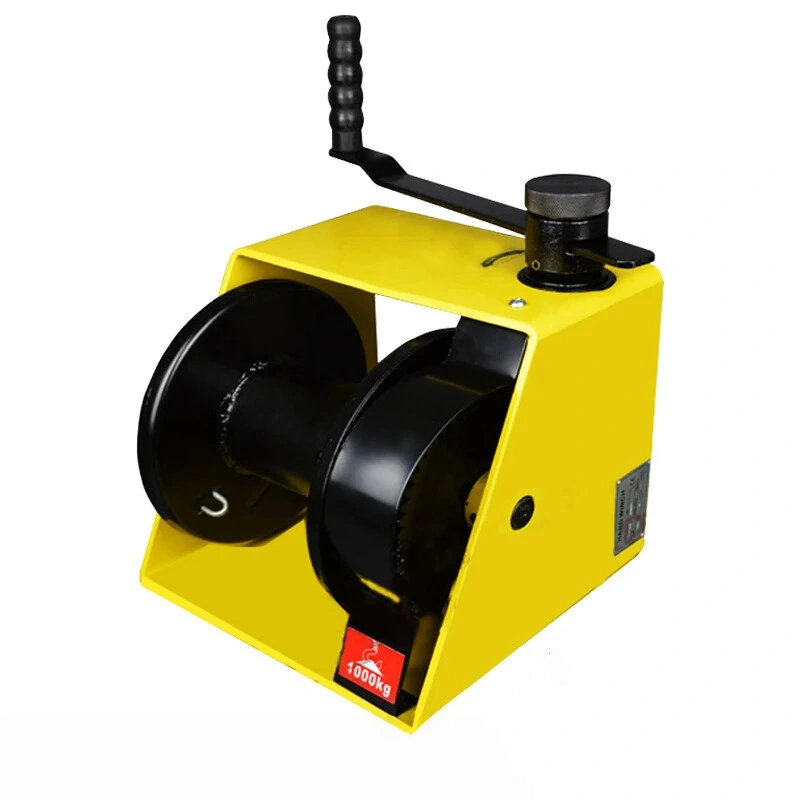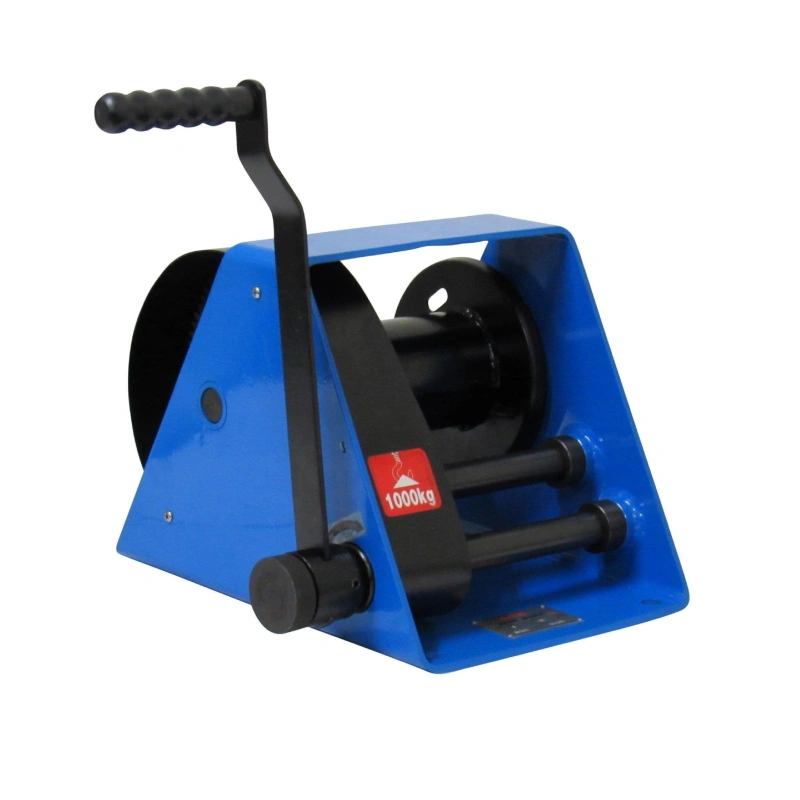You rely on chain slings to ensure that lifting operations are safe and efficient. Regular sling inspection and maintenance help prevent costly accidents and ensure compliance with strict safety requirements.
Powerful Machinery’s certified Chain Slings set the standard for reliability, giving you peace of mind in demanding environments. Industry regulations such as OSHA, ASME, and WSTDA require thorough checks and recordkeeping for every lifting operation.
Standard | Requirement |
|---|---|
OSHA | Slings must be inspected before each use and at the beginning of each shift by a competent person. |
ASME | Periodic inspections must occur at least once a year, with more frequent inspections for severe service conditions. |
WSTDA | Provides minimum guidelines for sling inspection and maintenance. |
By choosing certified products and following these standards, you protect your team and equipment every day.
Key Takeaways
Inspect chain slings before each use to catch any damage early and ensure safety.
Follow industry standards like OSHA and ASME for regular inspections to maintain compliance and reduce risks.
Document all inspections and repairs to track sling conditions and support safety audits.
Store your chain slings properly in a dry, clean area to prevent damage and extend their lifespan.
Choose certified products and professional services for repairs to guarantee safety and reliability.
Chain Sling Maintenance Overview
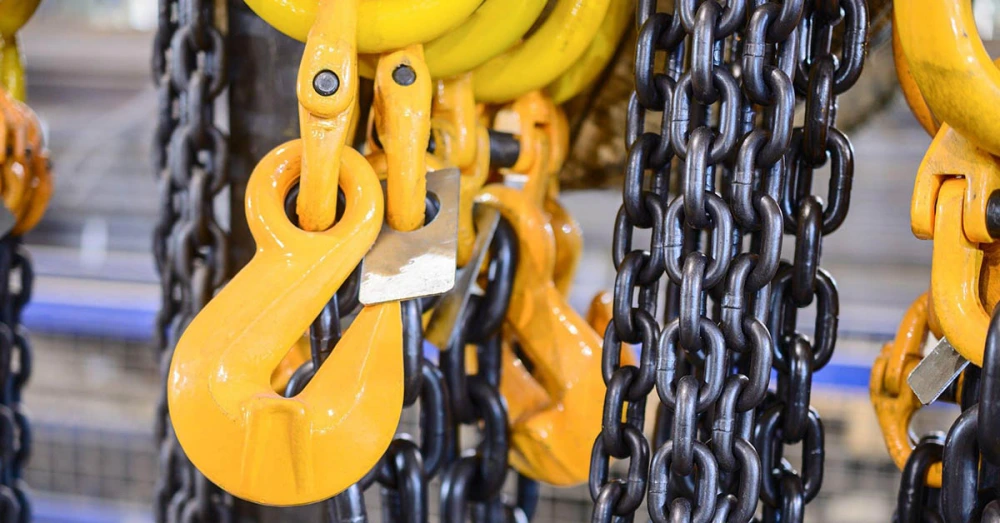
Safety and Compliance
You play a critical role in keeping your workplace safe. Powerful Machinery’s certified Chain Slings help you meet strict safety standards in every lifting operation.
These slings undergo rigorous testing and carry certifications that align with international regulations. When you use certified equipment, you reduce the risk of accidents and ensure compliance with OSHA and ASME requirements.
Regular inspection is essential to identify weakening or damage. Any sign of wear or defect necessitates immediate removal from service. To guarantee the longevity and reliability of your slings, schedule routine inspections at least annually, if not more frequently.
Chain sling maintenance protects your team and equipment. You can spot issues early and prevent failures before they happen. This proactive approach keeps your operations running smoothly and helps you avoid costly downtime.
Product Features and Value
Powerful Machinery designs chain slings for strength and reliability. You benefit from high-tensile steel construction, corrosion resistance, and flexible configurations. These features allow you to handle heavy loads in tough environments without worry.
Chain sling maintenance ensures these advantages last over time.
You can choose from single, double, triple, or quadruple leg designs to match your lifting needs. Each sling offers adjustable lengths and secure attachments, making your job easier and safer. When you follow a regular chain sling maintenance routine, you extend the lifespan of your equipment and maximize your investment.
Sling Inspection and Maintenance Steps
Pre-Use Sling Inspection
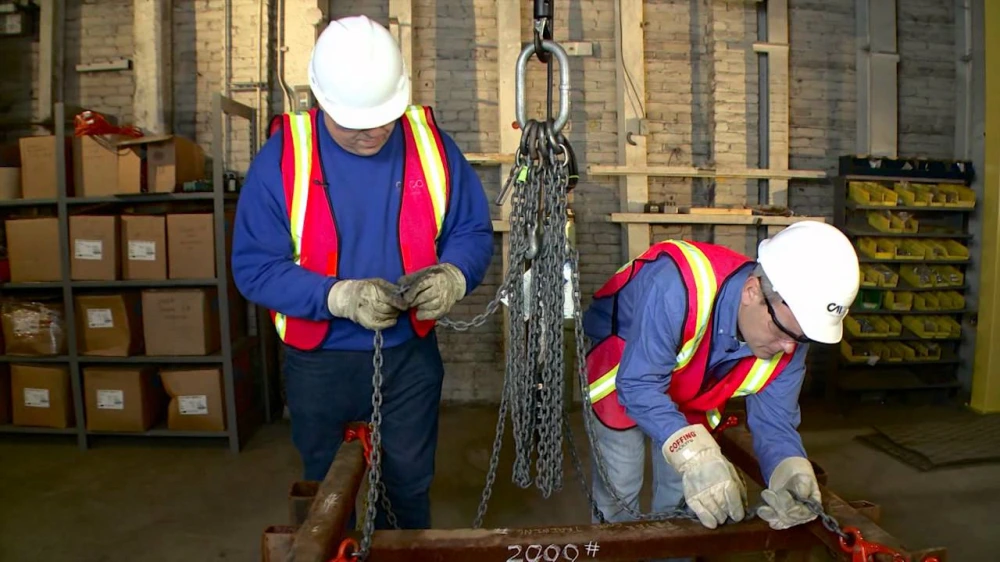
You must perform sling inspection and maintenance before every lifting operation. This step protects your team and equipment from unexpected failures. Begin with a visual sling inspection. Look for any visible signs of damage, such as cuts, frays, abrasions, or broken hardware.
Check the identification tags on each chain sling. These tags should display load capacity, material type, and usage limitations. If you find missing or unreadable tags, remove the sling from service.
Store your chain slings in a clean, dry area. Avoid exposure to chemicals or extreme temperatures. When you inspect your equipment, pay close attention to common issues. You may find broken wires, corrosion, or deformation in the wire rope.
Damaged rigging hardware also signals the need for immediate removal and a thorough examination. Powerful Machinery’s product standards require you to follow these steps for every sling inspection and maintenance routine.
Tip: Always document your sling inspection results. Record any defects and actions taken. This habit supports compliance and keeps your lifting operations safe.
Pre-Use Sling Inspection Checklist:
Visually inspect for cuts, frays, abrasions, or broken hardware.
Verify identification tags for load capacity and usage limits.
Confirm proper storage conditions.
Identify any damage to synthetic slings, wire rope, or hardware.
Remove slings with defects for thorough examination.
Cleaning and Preparation
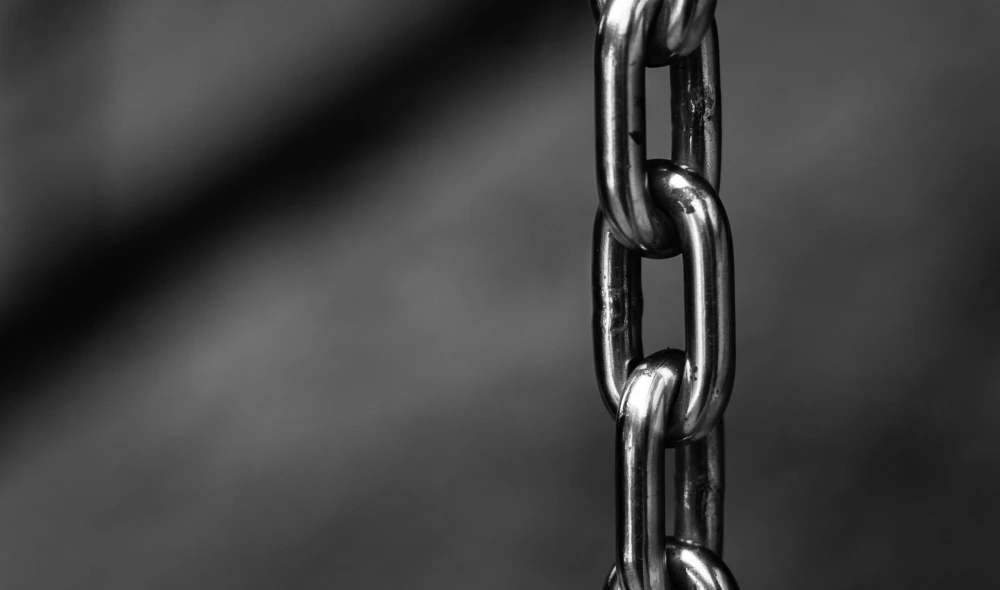
Proper cleaning and preparation extend the life of your chain slings. You should clean each sling before and after use. Select cleaning products that do not corrode or damage the chain.
Wipe away dirt, grease, and debris to maintain optimal performance. After cleaning, store your chain slings in a moisture-free area. Protect them from weather and caustic chemicals.
Clean chain slings before and after each use.
Use non-corrosive cleaning agents.
Store in a dry, protected location.
Routine cleaning is a vital part of sling inspection and maintenance. It prevents buildup that can hide defects and ensures every examination is accurate. Powerful Machinery recommends these steps to maintain the integrity of your lifting equipment.
Daily and Frequent Checks
You need to schedule daily and frequent sling inspection and maintenance to keep your operations safe. Initial inspections occur when you first acquire a chain sling. Frequent or pre-shift inspections happen daily, weekly, or before every use or shift.
Periodic inspections involve a thorough examination every 6 to 12 months. Special inspections take place after incidents or repairs to certify the sling’s fitness for work.
Inspection Type | Frequency Description |
|---|---|
Initial Inspections | Performed when the chain sling is first acquired |
Frequent or Pre-Shift Inspections | Daily, weekly, or before every use or shift |
Periodic Inspections | Every 6 to 12 months, including in-depth functional testing |
Special Inspections | After incidents or repairs to certify fitness for work |
You should never skip a sling inspection. Each examination helps you catch problems early and avoid costly downtime. Powerful Machinery’s certified chain slings make these checks straightforward. Their robust construction and clear labeling support every step of your sling inspection and maintenance process.
Note: Consistent sling inspection and maintenance routines reduce risk and improve the reliability of your lifting operations.
Periodic Sling Inspection
Inspection Frequency
You must schedule periodic sling inspections to maintain safety and compliance. International guidelines recommend yearly inspections for normal service. If your operations involve severe conditions, you should increase the frequency to monthly or quarterly.
Special service environments may require inspections as determined by a qualified person. You also need to consider how often you use the sling, the severity of the work environment, and the type of lifts performed. These factors help you decide the right inspection interval for your equipment.
Normal service: Inspect every 12 months.
Severe service: Inspect every 1 to 3 months.
Special service: Inspect as needed by a qualified person.
Always inspect before use and during use if conditions change.
Powerful Machinery’s chain slings meet international standards, including ASME and OSHA, ensuring your inspections align with industry best practices.
Qualified Personnel
Only qualified personnel should perform periodic sling inspections. A designated person with the right training and experience must carry out these checks. If you find any deficiencies, a qualified person should examine the sling to identify hazards and recommend corrective actions.
OSHA requires that a competent person inspect all alloy steel chain slings at least once every 12 months. Certified inspectors from Powerful Machinery can help you meet these requirements and keep your lifting operations safe.
Designated person: Performs routine inspections.
Qualified person: Evaluates hazards and determines necessary actions.
Certified inspectors: Provide expert assessments based on sling usage.
Inspection Records
You must keep accurate records of all periodic sling inspections. Proper documentation helps you track the condition of each sling and proves compliance with OSHA and ASME standards.
Maintain records of the most recent thorough inspection for each alloy steel chain sling. If you repair a sling, mark or tag it, and keep a written record of the repairs. These records should be available for examination at any time.
Requirement | Description |
|---|---|
Routine Inspections | Document each inspection to support performance and efficiency. |
Record Maintenance | Keep records of the most recent inspection for every alloy steel chain sling. |
Repair Records | Mark repaired slings and keep written repair records for review. |
Periodic Inspections | Retain all inspection records as required by ASME B30.9. |
Tip: Organized inspection records make audits easier and help you respond quickly to any safety concerns.
Inspection and Repair Criteria
Damage Identification
You must know how to spot signs of damage in your chain slings. Early detection keeps your team safe and prevents accidents. During every inspection and repair process, look for obvious signs of deterioration.
These can include cracks, excessive wear, or stretched links. If you see any of these issues, you need to act immediately.
Here is a quick reference table to help you identify when to remove a chain sling from service:
Criteria for Removal from Service |
|---|
Missing or illegible sling identification |
Cracks or breaks |
Excessive wear, nicks, or gouges |
Stretched chain links or components |
Bent, twisted, or deformed chain links or components |
Evidence of heat damage |
Excessive pitting or corrosion |
Lack of ability of the chain or components to hinge freely |
Weld splatter |
For hooks, the removal criteria as stated in ASME B30.10 |
Other conditions causing doubt about continued use |
You should always check for these signs of damage before each use. If you notice any of these problems, do not use the sling. Proper identification and quick action support sling safety and protect your equipment.
Removal from Service
When you find damaged slings, you must remove them from service right away. Never use a sling that shows obvious signs of deterioration. Even small defects can lead to serious accidents. Place the sling in a designated area for further evaluation. Mark it clearly so no one uses it by mistake.
Tip: Always follow your company’s safety procedures when removing slings from service. This step helps prevent injuries and keeps your workplace safe.
You should never try to repair a sling on your own unless you have the proper training and tools. Using a damaged sling puts everyone at risk. Instead, contact a qualified professional or the original manufacturer for further assessment.
Repair and Certification
You need to trust only recognized manufacturers, such as Powerful Machinery, for all repair work. These experts have the right equipment and knowledge to restore your chain slings to full strength. After repair, the sling must pass a thorough inspection and certification process before you return it to service.
The repair process includes several steps:
Inspect the damaged sling to determine the extent of the problem.
Replace or restore any worn or broken components using certified parts.
Test the sling to ensure it meets all safety and performance standards.
Certify the sling with updated identification and documentation.
Never skip these steps. Proper repair and certification guarantee that your equipment is safe and reliable. You also maintain compliance with industry regulations.
Powerful Machinery offers professional inspection and repair services, ensuring your chain slings meet the highest standards for maintenance and sling safety.
Chain Sling Maintenance Best Practices
Cleaning Methods
Proper cleaning keeps your chain slings in top condition and prevents corrosion. You should always use a non-abrasive cleaner and a stiff brush to remove dirt and debris. Avoid corrosive substances, as these can damage the steel and reduce the sling’s strength.
For tough rust spots, choose a pH-neutral chemical rust remover. This type of cleaner helps you avoid hydrogen embrittlement, which can weaken the chain. Never leave chain slings soaking in cleaning chemicals for long periods. After cleaning, dry the sling thoroughly before storage.
Tip: Regular cleaning not only extends the life of your chain slings but also makes inspections more effective by revealing hidden damage.
Storage Guidelines
Storing your chain slings correctly maximizes their lifespan and keeps them ready for use. Always hang slings on racks or hooks, or lay them flat on shelves. This prevents tangling, crushing, or kinking. Keep your storage area clean, dry, and well-ventilated.
Avoid places with moisture, direct sunlight, or extreme temperatures, as these conditions can cause corrosion or weaken the material. Organize your storage by labeling racks or bins according to sling type and capacity. This practice reduces handling errors and speeds up equipment selection.
Hang or lay flat to prevent damage.
Store in a dry, temperature-controlled area.
Label storage locations for easy identification.
Handling Tips
Safe handling practices protect your chain slings from unnecessary wear. Inspect each sling before use for signs of wear, deformation, or damage. Use proper rigging techniques and attachments to avoid stress points that can cause failure. Protect slings from moisture and chemicals during use and storage.
Replace any damaged or worn parts immediately.
Feature | Chain Slings (Powerful Machinery) | Synthetic Slings |
|---|---|---|
Durability | Extreme durability, high-strength steel | More vulnerable to abrasion |
Lifespan | Long can be repaired | Shorter |
Resistance to Conditions | Withstands -40°F to 400°F, resists cuts, abrasion, and heat | Less effective in harsh conditions |
Powerful Machinery’s chain slings deliver unmatched durability and performance, even in harsh environments. By following these best practices, you ensure your equipment remains safe, reliable, and ready for every lift.
Recordkeeping for Sling Inspection
Documentation
Accurate documentation forms the backbone of a safe lifting operation. You need to keep detailed records for every chain sling in your inventory. These records should include inspection dates, findings, repairs, and the name of the inspector.
When you document each inspection, you create a clear history for every sling. This practice helps you track wear, plan maintenance, and prove compliance during audits.
Tip: Use a dedicated logbook or digital system to organize your inspection and repair records. This habit saves time and reduces errors.
You should update records immediately after each inspection or repair. Include the sling’s unique serial number, inspection results, and any corrective actions taken. Well-maintained records help you identify patterns of wear and make informed decisions about equipment replacement.
They also support your safety program and demonstrate your commitment to industry standards.
Identification Systems
You rely on clear identification systems to manage your chain slings efficiently. Powerful Machinery equips each sling with a unique serial number, steel-engraved tag, and essential markings. These features allow you to trace the entire history of a sling, from manufacturing to each inspection and repair.
Identification Feature | Description |
|---|---|
Unique Serial Numbers | Each sling is hard-stamped with a unique serial number for traceability and recordkeeping. |
Steel-Engraved Tags | Tags display serial numbers, Working Load Limits (WLL), and manufacturer details. |
Marking Requirements | Markings include manufacturer’s mark, grade, size, and other required information. |
These identification systems make it easy for you to match each sling with its inspection and maintenance records. You can quickly verify if a sling meets safety requirements before every lift.
Powerful Machinery’s approach ensures you maintain full traceability and compliance with safety regulations. This level of detail protects your team and supports a culture of accountability in your workplace.
Powerful Machinery Chain Sling Services
Professional Inspection and Repair
You need reliable support when your chain slings require inspection or repair. Powerful Machinery offers professional services that help you maintain the highest safety standards. Certified technicians inspect your equipment using advanced tools and proven methods.
They identify issues quickly and recommend the best solutions. You can trust their expertise to restore your chain slings to full working condition.
When you choose Powerful Machinery, you benefit from a streamlined process. The team handles everything from detailed inspections to expert repairs and final testing. You avoid unnecessary downtime and keep your operations running smoothly.
Every repair uses certified components that match the original specifications. This approach ensures your chain slings meet or exceed industry requirements after every service.
Choosing professional inspection and repair services reduces risk and extends the lifespan of your lifting equipment. You gain peace of mind knowing your gear is safe and ready for every lift.
Certification Support
You must meet strict industry standards to keep your workplace safe and compliant. Powerful Machinery supports you with comprehensive certification services.
Each chain sling receives a unique serial number and a steel-engraved tag. These features make it easy for you to track inspections, repairs, and certifications throughout the sling’s life.
The company’s products carry certifications from leading organizations, including ISO9001, TUV Rheinland, and OSHA. You can present these certificates during audits or safety checks with confidence.
Powerful Machinery’s customer support team stands ready to help you with documentation, traceability, and technical questions.
Aspect | Description |
|---|---|
After-Sales Support | You receive prompt responses to your concerns, ensuring effective communication and support. |
Research and Development | The team works continuously to improve products and adapt to industry trends. |
Customer-Centric Approach | You experience exceptional service focused on building long-lasting relationships. |
With Powerful Machinery, you gain more than just certified products. You receive ongoing support that helps you maintain compliance and achieve operational excellence.
Conclusion
You protect your team and equipment when you inspect and maintain chain slings regularly. Certified chain slings from Powerful Machinery help you meet strict safety standards and reduce unexpected breakdowns.
Regular inspections extend sling lifespan and prevent accidents.
Industry standards like OSHA and ASME evolve to address new safety challenges.
To maintain safety and compliance, always review your procedures and use certified products. Rely on professional services for optimal results and keep your workplace safe.
FAQ
How often should you inspect chain slings?
You should inspect chain slings before each use and at the start of every shift. Schedule periodic inspections at least once a year. Increase inspection frequency if you use chain slings in harsh or demanding environments.
What signs indicate chain slings need removal from service?
Look for cracks, excessive wear, stretched links, or missing identification tags. Remove chain slings from service if you see any damage or if the chain slings fail to hinge freely. Always follow safety guidelines for evaluation.
Can you repair chain slings yourself?
You should not repair chain slings on your own. Only qualified professionals or the original manufacturer should handle repairs. This ensures chain slings meet safety standards and perform reliably after service.
How do you store chain slings to prevent damage?
Hang chain slings on racks or lay them flat in a dry, clean area. Avoid exposure to moisture, chemicals, or extreme temperatures. Proper storage keeps chain slings ready for safe use and extends their lifespan.
What makes Powerful Machinery’s chain slings different?
Powerful Machinery’s chain slings feature high-tensile steel, corrosion resistance, and certified safety. You benefit from flexible configurations and reliable performance. These chain slings meet international standards and deliver durability in tough environments.

